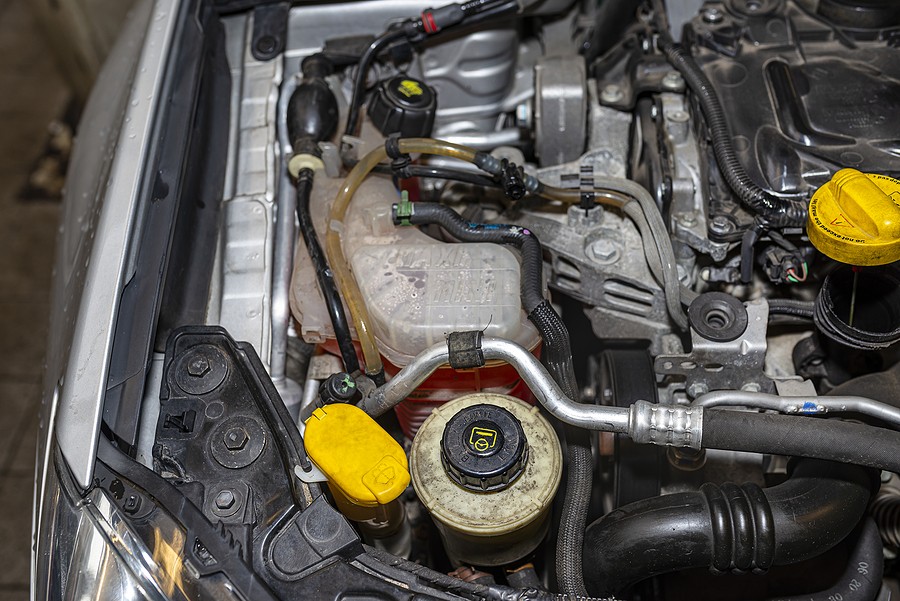Quick Answer: Yes, you can replace a rear main seal without removing the engine. This task involves elevating the vehicle, removing the oil pan and rear main cap, and careful installation of the new seal. This method is less invasive and can be more cost-effective.
Replacing the rear main seal in your vehicle is a critical maintenance task, often overshadowed by its complexity. Many car owners wonder if it's possible to undertake this repair without the daunting task of removing the engine. This article delves deep into the process, offering a step-by-step guide and addressing common concerns, ensuring that you have all the information needed to make an informed decision about your car's maintenance.
Understanding the Rear Main Seal
- What is a Rear Main Seal?
- Definition and Function: The rear main seal is a crucial component in your vehicle's engine. Located at the rear of the crankshaft, it serves to prevent oil leaks between the engine and transmission.
- Types of Rear Main Seals: Discuss the two primary types of rear main seals – one-piece and two-piece seals, highlighting their differences and implications for replacement procedures.
- Signs of Rear Main Seal Failure: Explore the common symptoms indicating a failing rear main seal, such as oil leaks and low oil levels, helping readers identify the issue early.
- Importance of Timely Replacement
- Preventing Engine Damage: Emphasize the importance of replacing a faulty rear main seal to avoid extensive engine damage and costly repairs.
- Impact on Vehicle Performance: Explain how a compromised rear main seal can affect the overall performance and efficiency of the vehicle.
- Long-Term Benefits: Discuss the long-term benefits of timely seal replacement, including improved vehicle reliability and longevity.
- Choosing the Right Replacement Seal
- Material Considerations: Detail the different materials used in rear main seals, such as rubber and silicone, and their respective advantages.
- Compatibility with Your Vehicle: Offer guidance on selecting a seal compatible with the specific make and model of the vehicle.
- Quality and Brand Recommendations: Provide recommendations on high-quality seal brands and what to look for when purchasing a replacement.
DIY Replacement Process
- Preparation and Safety
- Tools and Materials Needed: List the essential tools and materials required for the job, including jack stands, oil pan gasket, and new rear main seal.
- Vehicle Preparation: Guide on how to safely elevate and secure the vehicle for the procedure.
- Safety Precautions: Outline critical safety measures to prevent accidents during the repair process.
- Step-by-Step Replacement Guide
- Accessing the Rear Main Seal: Instructions on removing the oil pan and other components to access the rear main seal.
- Removing the Old Seal: Detailed steps on safely removing the old seal without damaging surrounding components.
- Installing the New Seal: Guide on correctly installing the new seal, ensuring a perfect fit to prevent future leaks.
- Post-Replacement Checks
- Ensuring a Proper Seal: Tips on how to check for a proper seal and avoid potential leaks.
- Reassembling the Vehicle: Guide on reassembling removed parts and ensuring everything is back in place.
- Testing for Leaks: Instructions on how to test for leaks after the replacement to confirm the success of the repair.
Professional Assistance vs. DIY
- When to Seek Professional Help
- Complexity of Your Vehicle Model: Discuss when it's advisable to seek professional help based on the model and make of the vehicle.
- Benefits of Professional Service: Highlight the advantages of professional services, such as expertise and warranty on the work.
- Cost-Benefit Analysis: Provide an analysis of the costs involved in DIY vs. professional rear main seal replacement.
- Finding a Reliable Mechanic
- Qualities of a Good Mechanic: Outline what to look for in a professional mechanic, including certifications, experience, and customer reviews.
- Recommendations and Research: Tips on how to find recommended mechanics in your area and the importance of doing thorough research.
- Questions to Ask Your Mechanic: Suggest critical questions to ask your mechanic before entrusting them with your vehicle.
- DIY Considerations
- Assessing Your Skill Level: Help readers assess their mechanical skill level and determine if they are capable of performing the repair themselves.
- Time and Effort: Discuss the time and effort required for a DIY replacement and whether it's feasible for the reader.
- Potential Risks and Mistakes: Address the potential risks and common mistakes associated with DIY rear main seal replacement.
Conclusion and Call to Action Conclude by summarizing the importance of a properly functioning rear main seal and the options available for replacement. Encourage readers to take action, whether it's undertaking the repair themselves or seeking professional help. Remind them of the peace of mind that comes with addressing this vital maintenance task.
Call to Action: If you're looking to sell your car, regardless of its condition, contact Cash Cars Buyer at 773-791-4363. We provide fair evaluations and swift transactions, making your car selling experience hassle-free.



